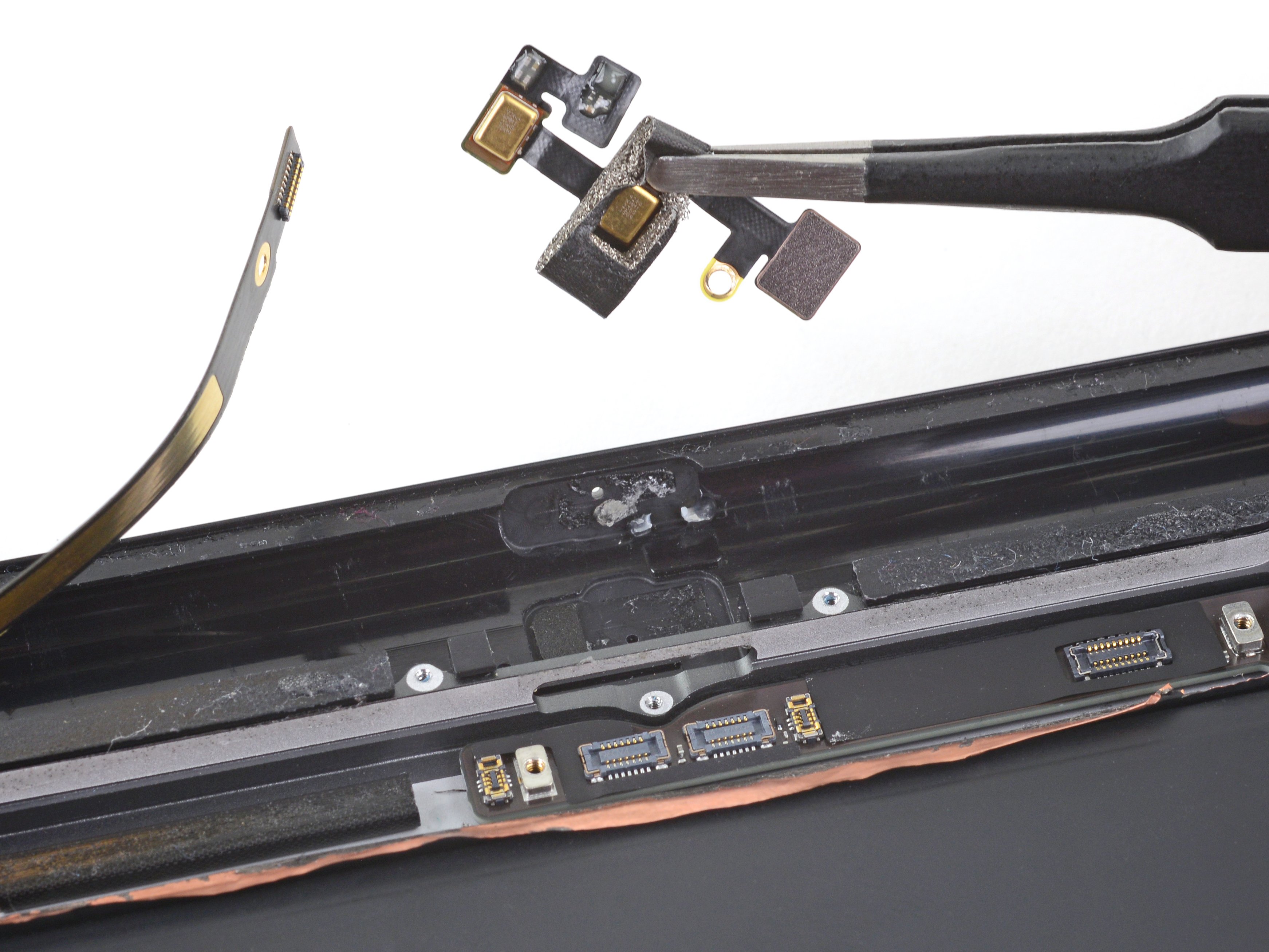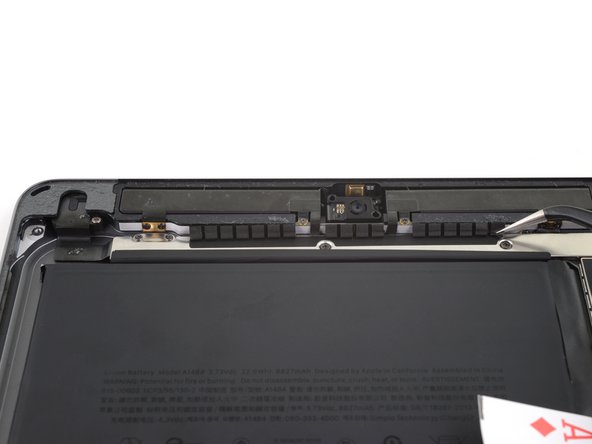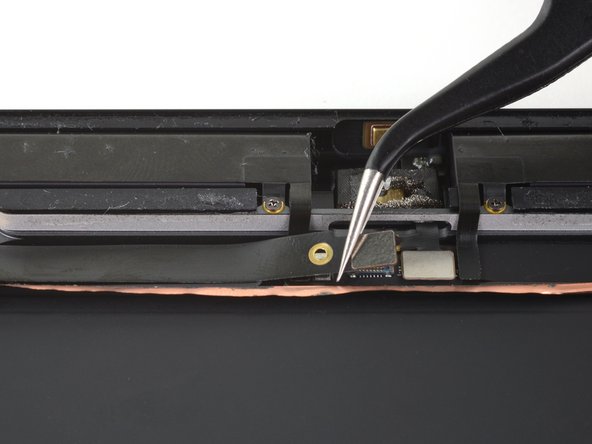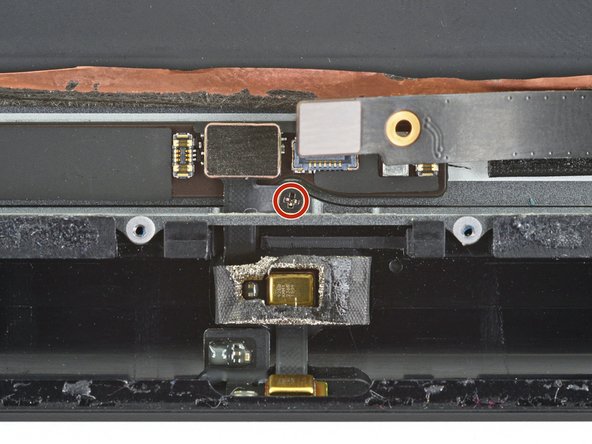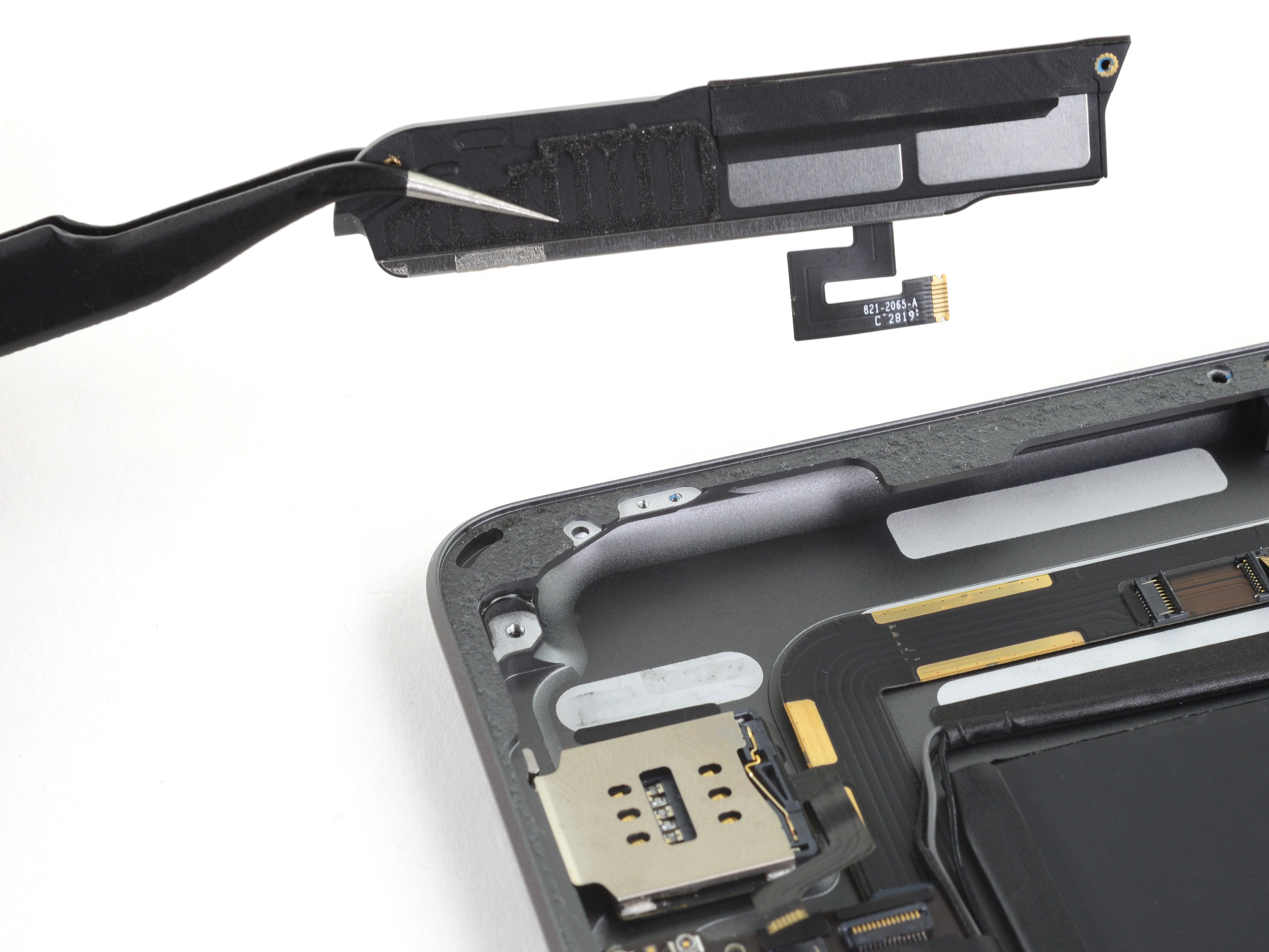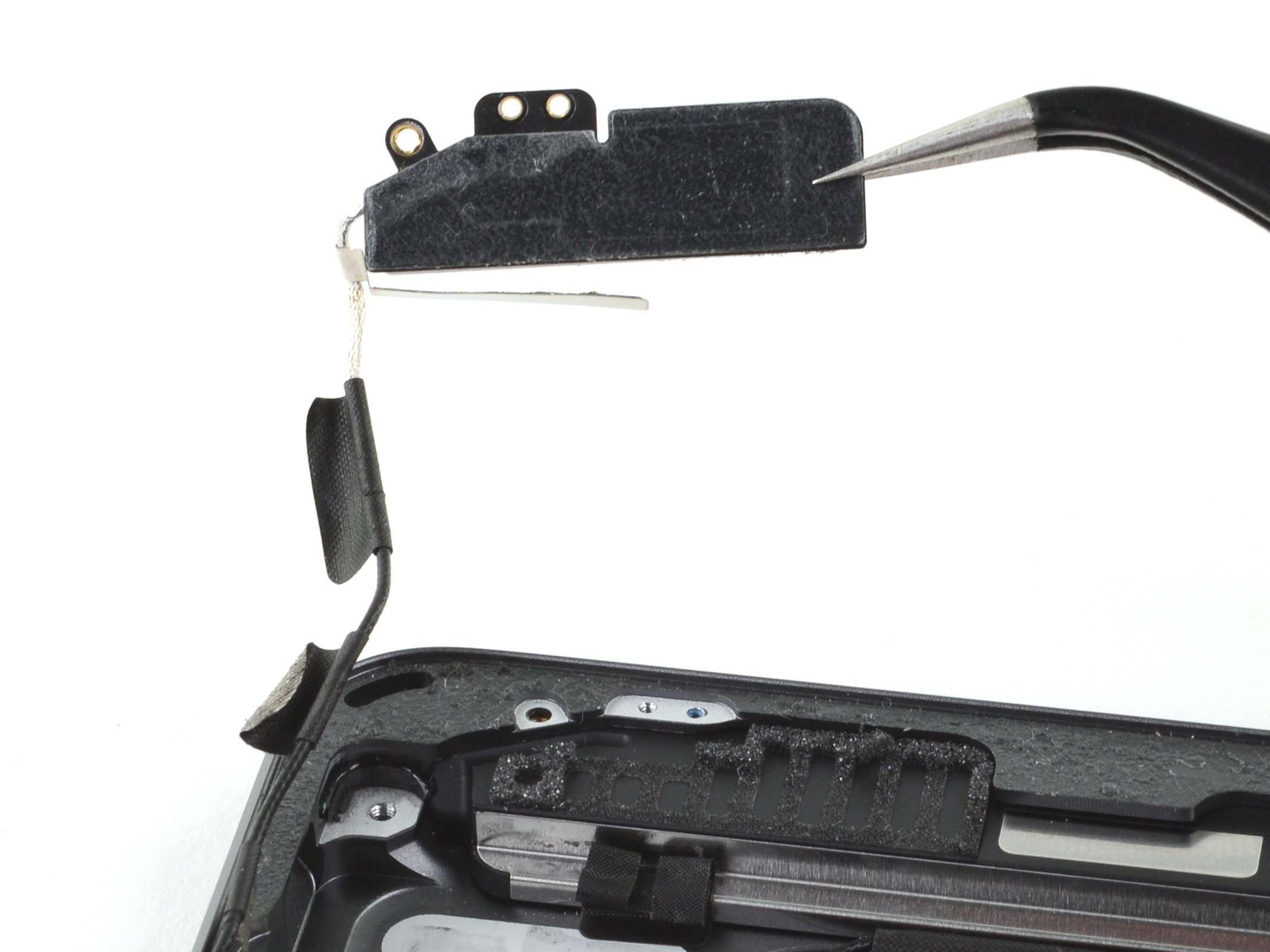iPad 7 Microphone Assembly Replacement
Duration: 45 minutes
Steps: 65 Steps
Get ready to tackle the microphone assembly on your iPad 7! Just a heads up, this guide specifically focuses on the LTE version, so if you have the Wi-Fi model, you might want to check out the other guide. When it comes to isolating the battery, take it easy and use a battery blocker—those battery contacts can be super delicate, and we definitely don’t want any irreversible damage. If you decide to skip isolating the battery, try to keep metal tools to a minimum, using them only when absolutely necessary (like for screw removal) to avoid any battery mishaps or damage to those sensitive circuit components. Some of the photos in this guide may show a different model and could have minor visual differences, but don’t worry; they won’t mess with the procedure. Let’s get started!
Step 1
- Heat up your iOpener and place it on the left edge of your device. Give it a good two minutes to work its magic.
Tools Used
Step 2
- As you give that adhesive some time to relax, keep an eye out for these sensitive spots that are best left undisturbed:
- Front camera
- Antennas
- Display cables
Step 3
The next three steps showcase the Anti-Clamp, a handy tool we created to make opening your device a breeze. If you’re not using the Anti-Clamp, just skip ahead three steps for another way to get it done.
For full details on how to work the Anti-Clamp like a pro, check out this guide.
If your iPad’s surface feels too slick for the Anti-Clamp to grip, try adding some tape to give it a bit more traction.
- Slide the blue handle backwards to release the Anti-Clamp’s arms.
- Prop up your iPad with something underneath so it sits nice and level between the suction cups.
- Set the suction cups near the middle of the left edge—one up top, one down low.
- Keep the bottom of the Anti-Clamp steady while pressing down firmly on the top cup to get a good suction.
Step 4
- Give that blue handle a little tug forward to lock those arms in place! You've got this!
- Now, twist that handle clockwise a full 360 degrees or until you see those cups start to stretch. Keep it steady!
- Make sure the suction cups are still playing nice and staying aligned. If they start to drift apart, just loosen them up a tad and realign those arms. You're doing great!
Step 5
Turn no more than half a twist at a time, then chill for a minute. Let the Anti-Clamp and a little patience do their magic!
Want the full scoop on using a hair dryer like a pro? Check out this guide.
If the Anti-Clamp isn’t opening up enough space, just heat it up a bit more and turn the handle clockwise half a turn to loosen things up.
- Take a breather for a minute to let that adhesive loosen up and create a little gap for you.
- If your screen’s not heating up enough, a quick blast from a hair dryer along the left edge of the iPad should do the trick!
- Slide an opening pick under the digitizer once the Anti-Clamp has made a nice enough gap for you.
- Feel free to skip the next step!
Step 6
If your screen is looking like a spider web because of cracks, don’t worry! You can give it a little support by slapping on some clear packing tape to help the suction cup stick. Or, if you're feeling adventurous, a strong tape can step in as a substitute for that suction cup. And if you're really in a bind, a dab of superglue can help you attach that suction cup to the shattered screen. Just remember, if it gets tricky, you can always schedule a repair.
- First things first, let's warm up that screen a bit! Once it’s cozy to the touch, grab a suction handle and stick it on the left edge of the screen, right up against the edge.
- Now, gently lift the screen using that suction handle to create a tiny gap between the digitizer and the frame. You got this!
- Time to slide in an opening pick! Just pop it into the gap you just made between the digitizer and the frame.
Tools Used
Step 7
No sweat if you spot the opening pick peeking through the digitizer — just gently pull it out. The LCD should be safe, but leaving any sticky adhesive behind can be a real pain to clean up later.
- Pop in a second opening pick right where you made that first gap.
- Gently slide the pick down toward the bottom-left corner of your device to break free from the sticky stuff.
- Keep that pick snugly in the bottom-left corner to stop the adhesive from making a comeback.
Step 8
- If your opening pick is feeling a little too cozy in the adhesive, just give it a gentle 'roll' along the side of the iPad. That should help it break free and keep the adhesive separation going smoothly!
Step 9
- Gently slide your first opening pick up towards the top-left corner to break up that stubborn adhesive.
- Keep the pick wedged there so the adhesive doesn’t sneak back and seal itself.
Step 10
- Warm up an iOpener and press it against the top edge of your device for a solid two minutes.
Tools Used
Step 11
- Gently rotate the pick around the top-left corner of your device to loosen up the adhesive and start separating it. Take your time—no rush!
Step 12
Be careful not to slide the pick over the front camera—it can be a real bummer if the lens gets damaged. The following steps will show you how to keep that from happening!
- Gently glide that opening pick along the top edge of your device, but hold up just shy of the front camera. You've got this!
Step 13
- Gently pull the pick out so that just the tip stays tucked between the digitizer and the frame.
- Carefully slide the pick over the top of the front camera to loosen the adhesive.
- Keep the pick resting near the right side of the front camera before moving on to the next step.
Step 14
- Pop the pick back in and slide it up towards the top-right corner to fully loosen the top adhesive.
- Keep the pick lodged in the top-right corner to stop that adhesive from sticking back together.
Step 15
- Warm up that iOpener and give it a cozy spot on the right edge of your device for a solid two minutes. You've got this!
Tools Used
Step 16
- Gently twist the pick around the top-right corner to loosen up that stubborn adhesive and keep things moving!
Step 17
The display cables hang out about halfway up from the bottom of your iPad. Slide carefully and stop once you hit around three inches from the bottom—no need to go further!
- Grab a fresh opening pick and slide it in halfway along the right edge of the iPad. Steady does it!
Step 18
- Warm up an iOpener and place it along the bottom edge of your device for a solid two minutes to loosen things up.
Tools Used
Step 19
Be careful not to swing the pick all the way around the corner, or you might accidentally give the antenna a little love tap—and not the good kind!
- Gently slide the bottom-left pick down to the bottom-left corner to loosen up that adhesive.
- Keep the pick nestled in the bottom-left corner before you move on to the next step.
Step 20
Keep the pick sliding only towards the home button—sliding it the other way might mess up the antenna, and we don’t want that!
If you find yourself needing to slide the pick over this spot again, just pop it out and slide it back in at the bottom-left corner to keep things smooth.
- Slide a fresh opening pick into the gap you've created along the bottom edge of your iPad.
- Gently move the pick over the antenna, stopping just short of the home button.
- Leave the pick to the left of the home button and continue from there.
Step 21
Be super careful to only slide that pick in about 1 mm—going deeper might give the right antenna a bad day!
- Pop an opening pick into the little gap you've just made. You're doing great!
- Now, gently slide that pick under the home button, easing it towards the bottom-right corner. Just let the tip find its way between the digitizer and the frame. Nice and smooth!
Step 22
Make sure to slide the pick gently towards the home button. Going the other way might cause some unwanted antenna damage. Take it easy, and you'll be fine!
If you find yourself needing to slide that pick over this section again, just pull it out and reinsert it at the bottom-right corner. You've got this!
- Pop that pick back in and slide it right towards the home button to fully break free from the bottom adhesive. You're doing great!
- Just leave the pick hanging out to the right of the home button before moving on to the next step.
Step 23
- Grab an iOpener, heat it up, and press it gently against the right edge of the device for about two minutes. Give it a little time to work its magic!
Tools Used
Step 24
Take it easy with this step. No need to rush—let the adhesive warm up and soften properly. Use your pick to gently separate the adhesive, making sure it's all loosened up. If things feel a bit tough, feel free to pause and reheat. Patience is key here, and if you're stuck, you can always schedule a repair.
If you're feeling some serious resistance, give those edges a little heat, and gently glide your opening pick along them.
- Place the opening picks on the left corners of the iPad and give them a gentle twist. This will help lift the digitizer just enough to break free the last bit of adhesive. Take it slow and steady, you got this!
Step 25
- Gently lift the left edge of the digitizer upward to help loosen the adhesive along the right side of your iPad.
Step 26
- Keep a steady hand on the digitizer as you carefully slide an opening pick between the two display cables to gently break apart the last bit of adhesive holding them together.
Step 27
- Once the adhesive is all peeled away, open the digitizer like a book and set it down next to the iPad, like two best friends chilling together.
- When putting it all back together, grab some isopropyl alcohol and wipe off any leftover adhesive from the frame—and from the digitizer if you plan on reusing it. Then stick on some fresh adhesive with our adhesive strips or pre-cut adhesive cards.
- Be careful with the display cables while reassembling. Make sure they're folded neatly underneath the LCD screen so they don't get squished or damaged.
Step 28
- Grab your trusty Phillips screwdriver and gently unscrew those four 4.3 mm-long screws holding the LCD in place—easy peasy!
- As you work through this repair, keep a close eye on each screw; they love to play hide and seek, so make sure they return to their cozy home to keep your device safe and sound.
- Don't forget to peel away any tape hiding those sneaky LCD screws—let's give them their moment in the spotlight!
Step 29
Hold up! Don’t yank the LCD out completely just yet—it’s still hanging on by a few cables near the home button.
Gently lift the LCD starting from the front-facing camera side only.
- Use the flat end of a spudger to gently lift the LCD out of its snug little home, just enough so you can get a good grip with your fingers.
- Carefully flip the LCD like you're turning a page in a book, lifting it near the camera and gently guiding it over to the home button side of the rear case.
- Place the LCD on a soft, clean, lint-free surface so you can easily access the display cables without any distractions.
Tools Used
Step 30
- Grab your trusty Phillips screwdriver and tackle that single 2.3 mm-long screw holding the battery connector to the logic board. You've got this!
Step 31
Check out these photos of the battery connector hiding beneath the logic board. They’ll be your trusty sidekicks as you carefully disconnect the battery.
You'll notice those clever cantilever springs on the logic board gently pressing against the battery contact pads. Since both the logic board and battery are glued down, you'll want to slide something thin and flexible between the contact points to safely disconnect the battery.
Step 32
Take it easy when you're using a battery blocker to isolate the battery. The contacts are super delicate, and even a small bend or break could cause some serious damage. Proceed with care, and remember, if things get tricky, you can always schedule a repair.
Make sure the logo on the battery blocker is facing upwards—no sneaky flips!
Avoid shoving the battery blocker under the connector with too much muscle. If it’s being stubborn, try sliding a playing card under the logic board to gently disconnect the battery instead.
Ideally, the battery blocker or playing card should glide under the logic board without any fuss and settle at about a 15-degree angle.
- Carefully slide the battery blocker underneath the logic board's battery connector at a 35-degree angle. Precision is key here, so take your time.
- Leave the battery blocker in place while you continue with the rest of the steps. It’s your quiet little helper!
Tools Used
Step 33
- Grab your trusty Phillips screwdriver and go ahead and unscrew those three 1.4 mm-long screws holding the display cable bracket in place. You're almost there!
Step 34
- Time to say goodbye to the display cable bracket! Gently remove it and let the adventure continue.
Step 35
- Grab your trusty spudger and gently lift the LCD cable's press connector straight up. It's like giving it a little nudge to say, 'Hey, time to disconnect!'
- When it's time to reconnect those press connectors, do it with care! Start by lining up one side and give it a gentle press until you hear that satisfying click. Then, repeat the magic on the other side—just remember, no pressing in the middle! If things get misaligned, you might bend those pins, and nobody wants that kind of drama!
Tools Used
Step 36
- Gently detach the LCD and place it face down on a clean, soft, lint-free surface. You're doing great!
Step 37
- Grab a trusty pair of tweezers and gently peel away the tape that’s covering the home button cable ZIF connector. You're almost there!
Tools Used
Step 38
- Gently use the tip of a spudger, an opening tool, or even your fingernail to lift up the little hinged locking flap on the home button cable ZIF connector. You've got this!
Tools Used
Step 39
- Grab a pair of tweezers and gently pull the home button ribbon cable straight out of the ZIF connector. Take it easy and make sure you're being careful, we want everything to stay in one piece!
Tools Used
Step 40
Be gentle with your iPad! When you're prying, stick to the connectors themselves—no need to mess with the socket on the logic board. Just the connectors, and you’ll be golden!
- Grab the flat end of your trusty spudger and gently lift the two digitizer cables straight up to pop those press connectors loose.
Tools Used
Step 41
Be careful not to mess up the home button ribbon cable – it's delicate, so treat it with care!
- Gently use the flat end of a spudger to lift the vibration isolator right below the SIM card reader. It’s like giving your device a little nudge!
- Now, go ahead and take out the vibration isolator. You've got this!
Tools Used
Step 42
The cable is held down with a bit of mild adhesive.
- Grab a trusty pair of tweezers and gently coax that home button cable away from the rear case. You've got this!
Tools Used
Step 43
Grab your trusty opening pick and slice through any leftover adhesive that might still be holding the front panel assembly to the frame—let's set it free!
Be sure to keep an eye on those digitizer areas; without the right insulation, they could accidentally ground against other components and cause some pesky touch input issues.
Just a heads up, that insulation is a sneaky little thing—it's not visible to the naked eye and is different from the foam dust barrier strips you see on many iPads.
- Take off the front panel assembly carefully.
- If your new display starts acting up with 'ghost' or 'phantom' touches, you can fix it by adding a super thin layer of insulating tape like Kapton (polyimide) tape to the marked spots on the back of the panel. Replacement digitizers already include the right insulation, so you usually won’t need to add any tape.
- When putting everything back together, make sure to remove any leftover adhesive from the iPad. Clean those sticky areas with high-concentration isopropyl alcohol (90% or higher) and a lint-free cloth to get the surface ready for fresh adhesive and a solid bond.
- Give your iPad a test run to check all functions, then apply pre-cut adhesive strips to the back of the display following the display adhesive application guide before sealing it up.
Step 44
- Gently lift the LCD buffer tape away from the upper component bracket with care.
Step 45
- Grab your Phillips screwdriver and loosen those five screws holding down the upper component bracket.
- Three screws are 1.4 mm long,
- and two screws are 1.9 mm long.
Step 46
Carefully peel the upper component bracket away from the tape holding it down to the logic board—gentle does it!
- Grab your trusty spudger and use its pointy end to gently lift the upper component bracket. Once it's up enough, give it a good grip with your fingers.
- Now, carefully remove the upper component bracket. You’ve got this!
Tools Used
Step 47
- Grab your spudger and use the flat end to gently pry up the front camera cable connector. Give it a nice, straight lift to disconnect it—easy does it!
Tools Used
Step 48
- Gently pry the front camera out of its spot using a spudger until you can grab it with your fingers.
- Use the spudger to carefully peel the adhesive foam pad away from the front camera.
Tools Used
Step 49
- Grab your tweezers and carefully hold the front camera, then twist it gently to guide the cable through the slot in the back case.
- Take out the front camera.
Tools Used
Step 50
- Grab that trusty spudger and gently lift the headphone jack straight up from the press connector. You've got this!
Tools Used
Step 51
- Grab a trusty pair of tweezers and gently lift that headphone jack off the logic board, then tuck the cable out of the way like a pro.
Tools Used
Step 52
- Grab your trusty Phillips screwdriver and unscrew those three tiny 1.4 mm-long screws that are holding the cellular antennas snugly to the rear case. It's like giving them a little freedom!
Step 53
- Grab your trusty Phillips screwdriver and unscrew the four 1.4 mm-long screws holding the cellular antennas in place on the rear case. Easy peasy!
Step 54
- Grab your trusty spudger and use the pointy end to gently pry up the right cellular antenna coaxial cable, getting in as close to the connector as you can without disturbing anything else.
- Now, let's move on to the left antenna cable. Disconnect it with ease, keeping things smooth and steady.
Tools Used
Step 55
- Grab your trusty spudger and use the flat end to gently lift those cellular antennas straight up from their press connectors. You're doing great—keep it steady and don’t hesitate if it feels a bit snug!
Tools Used
Step 56
- Slide the sharp end of your trusty spudger behind the right cellular antenna bracket and give it a gentle nudge to pop it loose.
- Carefully lift the right cellular antenna out of the rear case and set it aside.
Tools Used
Step 57
Hold the antenna cable by the cable itself—grabbing the connector is a no-go since it can snap. Treat those coaxial cables gently!
- Gently lift the left cellular antenna coaxial cable away from the rear case.
Step 58
- Slide the flat end of your trusty spudger under the left cellular antenna bracket and give it a gentle nudge to pop it loose. You've got this!
- Now, lift that left cellular antenna right out of the rear case. You're making great progress!
Tools Used
Step 59
- Grab your Phillips screwdriver and carefully unscrew the 1.4 mm screw that’s holding the microphone assembly in place on the back case. You’ve got this!
Step 60
- Gently use the flat end of a spudger to pop the microphone cable loose by lifting straight up on the press connector. You've got this!
Tools Used
Step 61
- Warm up an iOpener and press it gently onto the microphone assembly for about thirty seconds to loosen things up a bit.
Tools Used
Step 62
If the microphone is really giving you a hard time, crank up the heat a bit more and give it another go. Patience is key!
- Slide a halberd spudger gently under the upper microphone to lift it away from the rear case with care.
Tools Used
Step 63
- Slide the halberd spudger under the lower microphone and give it a little twist to gently detach it from the rear case.
Tools Used
Step 64
- Grab your trusty tweezers and gently guide that microphone assembly flex cable through the slot in the rear case. You've got this!
Tools Used
Step 65
- Put your device back together by following these steps in reverse — easy peasy!
- Got some e-waste? Make sure to drop it off at an R2 or e-Stewards certified recycler.
- If things didn’t turn out quite right, try some basic troubleshooting or reach out to our iPad 7 Answers community for a hand.
- And remember, if you hit a tricky spot, you can always schedule a repair with us.
